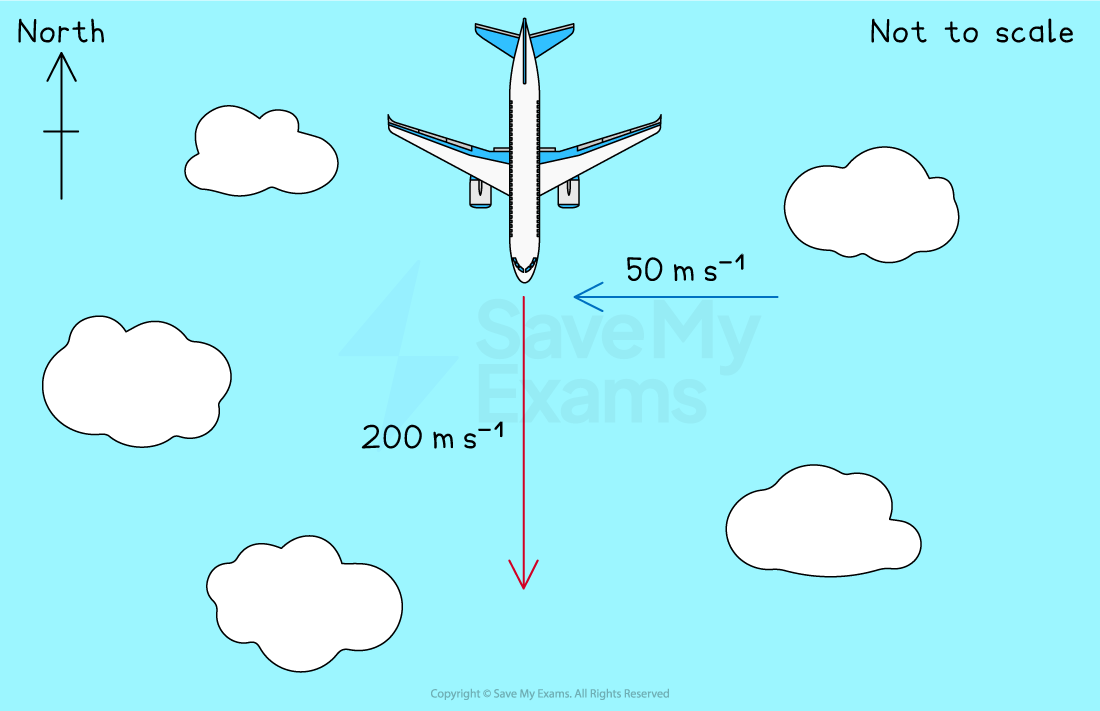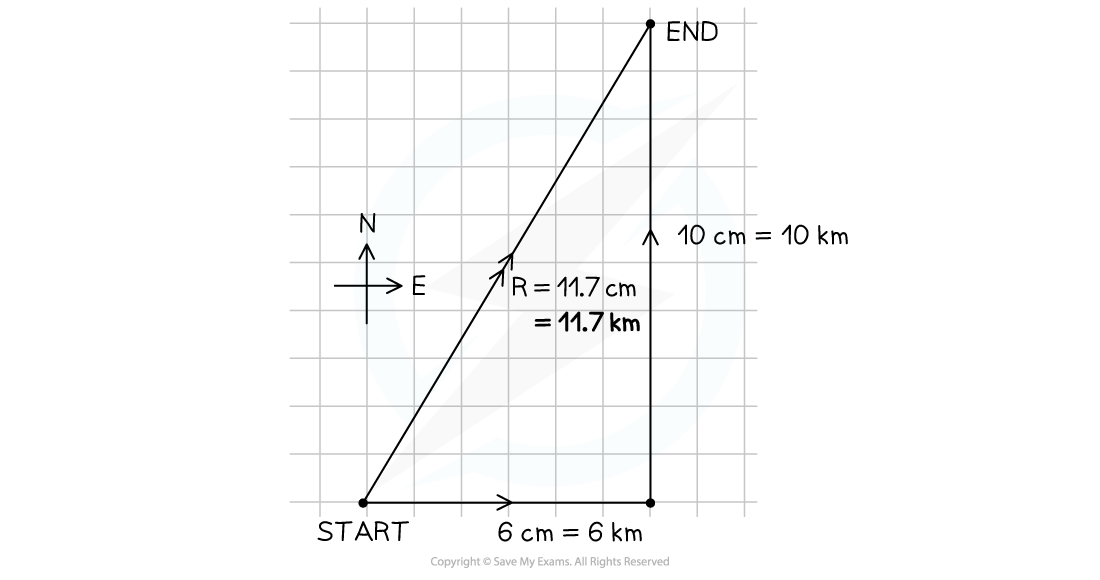Scale Diagrams (SQA National 5 Physics): Revision Note
Exam code: X857 75
Scale diagrams
Representing vectors
Vectors can be represented using arrows drawn to scale
The length of the arrow represents the magnitude of the vector
The direction of the arrow indicates the direction of the vector
The length of the arrows must be proportional to their magnitudes

Constructing scale diagrams
A scale diagram can be used to find the resultant of two vectors, such as displacement, velocity, or force, using the following steps:
Step 1: Choose an appropriate scale
e.g. 1 cm = 100 m, 1 cm = 1 m s-1 , or 1 cm = 5 N
Step 2: Draw the vectors head-to-tail
Step 3: Draw the resultant vector from the start (the tail) of the first arrow to the end (the arrow head) of the second
Step 4: Measure the length of the resultant vector using a ruler and convert it using your chosen scale
Step 5: Measure the angle with a protractor
If using compass bearings, measure the angle from due North
If an aeroplane is travelling due south at 200 m s-1 and the wind is moving due west at 50 m s-1, then using a scale of 1 cm = 25 m s-1:
The velocity of the aeroplane would be 8 cm long
The velocity of the wind would be 2 cm long
The size of the resultant velocity would be about 8.25 cm long, which is equivalent to 8.25 × 25 = 206 m s-1
The direction of the resultant velocity would be about 14° E of S or a bearing of (14 + 180 =) 194
Using a scale diagram to find resultant velocity


Worked Example
A hiker walks from point A to point F following the route shown.

By scale diagram or otherwise, determine the resultant displacement of the hiker from point A to point F.
Answer:
Step 1: Calculate the total displacement in each direction
The total displacement in the north direction is
The total displacement in the east direction is
Step 2: Choose a sensible scale
For the two vectors, 6 km and 10 km, a scale of 1 cm = 1 km would be appropriate
Step 3: Draw the two components using a ruler and make the measurements accurate to 1 mm

Step 4: Draw the resultant vector, remembering the start and finish points of the journey

Step 5: Carefully measure the length of the resultant and convert using the scale

Step 6: Measure the angle between the vector and the horizontal line

Step 7: Write the complete answer, giving both magnitude and direction
Magnitude of the resultant displacement = 11.7 km
Direction of the resultant displacement (as a bearing) = 031
For direction, you could also say 59° N of E or 31° E of N
Examiner Tips and Tricks
In exam questions, the vectors will always be along the same line or at right angles to each other. When producing a scale diagram, you must use a sharp pencil, ruler and protractor to ensure all the lengths and angles are as accurate as possible. If you are confident performing calculations with vectors, then it is a good idea to use these methods (i.e. Pythagoras' theorem and trigonometry) to double-check your answer.

Unlock more, it's free!
Did this page help you?